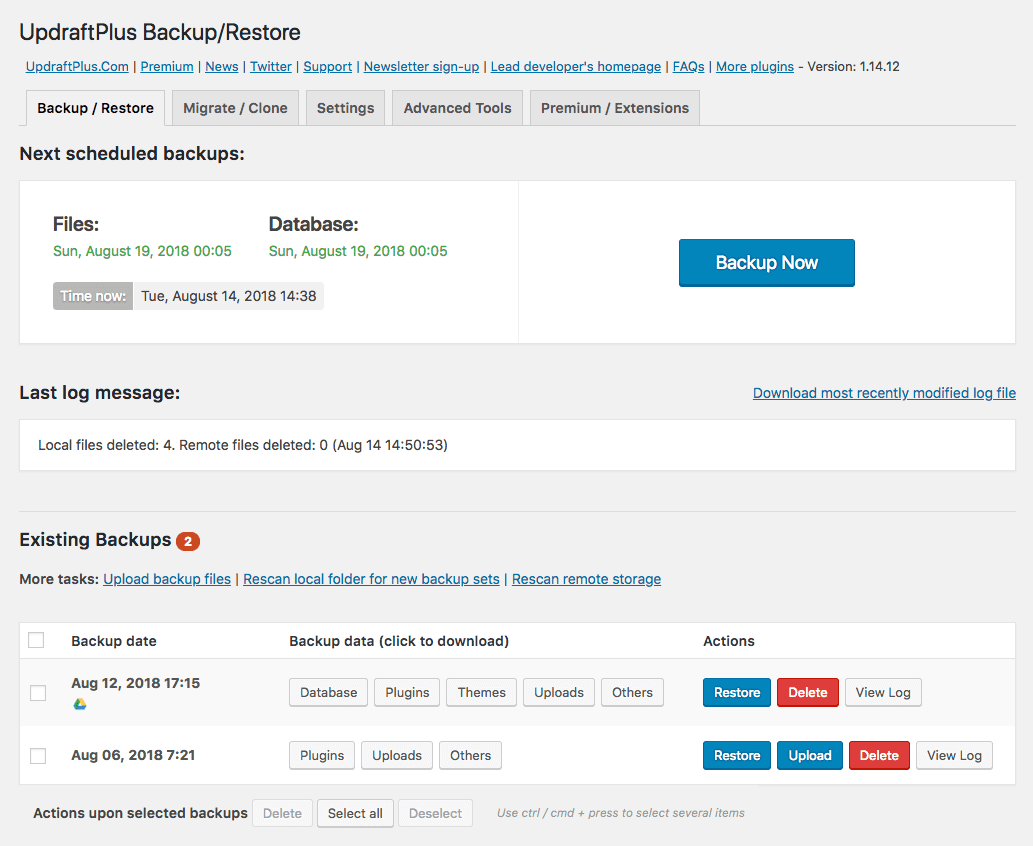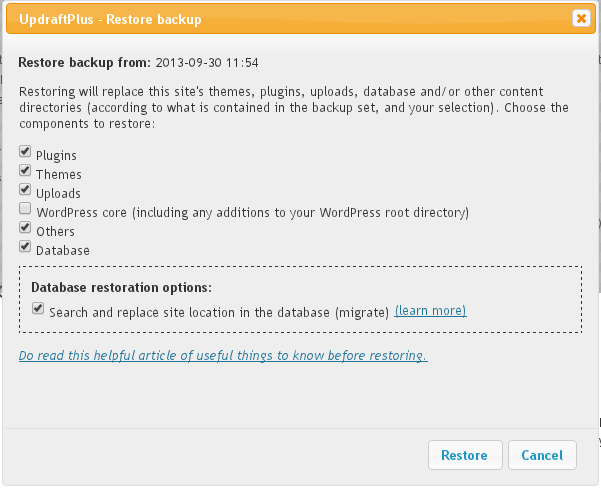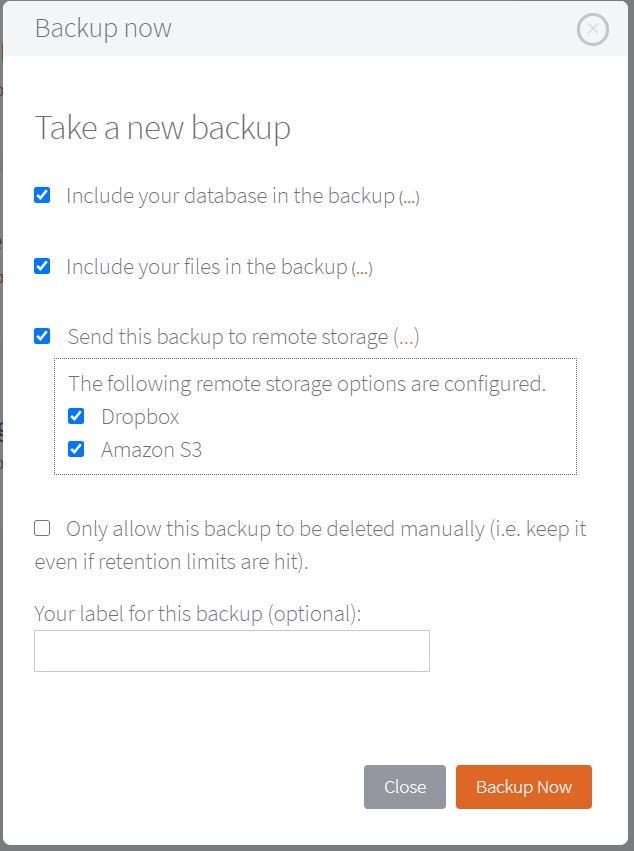
There’s nothing more distressing for a site manager then having something go wrong with your WordPress site. Whether it’s unexpected file changes, malware, errors, plugin updates, or something else entirely, the fix sadly may not be simple. Due to all the potential issues a WordPress site faces, it can be a valuable lifeline to easily and quickly restore your site to a healthier point in time by using UpdraftPlus.
In this guide, we’ll be providing you with step-by-step instructions detailing how you can restore your WordPress site to a previous date using the UpdraftPlus WordPress backup plugin. As a bonus, we’ll outline why you might need to restore your WordPress site with a few examples you might find familiar.
Why you might need to restore your WordPress site
Before we outline how you can restore your site, it’s worth looking into some of the reasons why you might need to do it. Restoring your WordPress site to a previous date isn’t something that should be done lightly, but there are a few very valid and common reasons why you might need to. Here are a few you might recognise:
Your site has been hacked or compromised
WordPress itself is a secure content management system on which you can build your website. However, without proper management, it can be prone to attacks by bots and/or hackers.
Any of the following could give these bots or hackers an easy way into your website to spread malware, change access, steal user data or change files:
- WordPress, plugins or themes have not been updated – Most plugins need to be kept up to date to remain secure and free from the latest vulnerabilities. By not updating plugins, website owners can leave their site unintentionally vulnerable.
- Weak passwords and usernames are still being used – a weak or common username or password combination is enough for bots to gain access to your site. Even keeping the username ‘admin’ on your site can leave you open to easy access.
Should you site become compromised in this way, then a backup and restore plugin like UpdraftPlus can restore your sites content. With an additional add-on, UpdraftPlus can also restore your WordPress core and non-standard files too.
Major changes were made and files are overwritten
In the management of your WordPress site, sometimes things can get out of hand and mistakes can be made. For example, you have a developer or member of your team working on making improvements to your site but they forget to save an older version of the file they’re working on, just in case they make a mistake.
By making the wrong kind of changes, your developer has created an error on a major file, with you site now inaccessible to visitors. By using a backup and restore plugin though, you’re able to restore your WordPress site to a previous date, before the error was created and the file was changed.
Pro tip: When either making changes to your website yourself or having a developer help you, we always recommend creating a clone/staging environment for your site. This way any changes you make won’t affect your live site. You can do this easily with UpdraftClone.
As a bonus, UpdraftPlus can be set up to perform automatic backups when plugins, themes and WordPress core updates run. This means that keeping your site up to date and secure has never been easier.
How to restore your WordPress site to a previous date
If you recognise any of the above situations and need to restore your WordPress site to a previous date, then the following step-by-step instructions will help.
Note: UpdraftPlus can only restore your site to a previous date if you already had UpdraftPlus installed and performing scheduled backups. If you do not have UpdraftPlus installed, it is recommend that you contact your hosting provider, who can hopefully help you.
To save your future-self time, money and a serious headache, get UpdraftPlus installed (it’s free) on your site to give you peace of mind.
UpdraftPlus not only restores your WordPress site to a previous date, but it also:
- Performs backups of all your WordPress files, databases, plugins and themes.
- Implements scheduled backups every 4, 8 or 12 hours, daily, weekly, fortnightly or monthly (set by you).
- Restores backups directly from your WordPress control panel.
- Lets you store your backups remotely on Google Drive, Dropbox, OneDrive and more.
Installing UpdraftPlus
Installing UpdraftPlus takes just a minute or two and is as simple as adding any other plugin to your site. To install, follow these steps:
1.In your WordPress dashboard go to Plugins > Add New.

2. Type UpdraftPlus into the search bar.

3. Find the UpdraftPlus WordPress Backup Plugin and press Install Now and then Activate.

How to use UpdraftPlus to restore your WordPress site
In this example, we have UpdraftPlus installed, set up and running and have already backed up our site in Google Drive (our storage of choice). If you need a little more help, read this guide to understand how to get UpdraftPlus up and running and backing up your site.
To restore your site, do the following:
1. Go to Settings > UpdraftPlus Backups in your WordPress menu. This will open your UpdraftPlus settings page.
2. Scroll down the page until you reach the Existing Backups section.

3. Find the backup from the date you want to restore and press the blue Restore button.
4. You will then be shown a popup which will ask you which elements of your database you want to restore. Select the ones that apply and press Restore.

When your restore is complete, a message will pop up telling you the “Restore has been successful”.
That’s it!, Restoring your WordPress site with UpdraftPlus is easy and hassle-free. Plus, you can configure how often you would like your backups to take place. This is handy if you have a very active site that’s updated regularly, allowing you to create daily updates to help give you peace of mind.
Summary: Restoring your WordPress site to a previous date
In this guide, you’ve learned why having the ability to restore your WordPress site is important and how to get it done quickly and easily using UpdraftPlus.
The investment you make in backing up your website so you can restore it to a previous date should you ever need to, will not only save you time but money also.
Having the ability to restore your WordPress site will help you avoid costly developer fees and website downtime. UpdraftPlus makes this process simple and easy to do.
The plugin featured in this guide:
Get UpdraftPlus for free – Schedule regular backups of your WordPress site and restore it from those backups in your WordPress control panel.
The post How to restore your WordPress site to a previous date appeared first on UpdraftPlus. UpdraftPlus – Backup, restore and migration plugin for WordPress.










